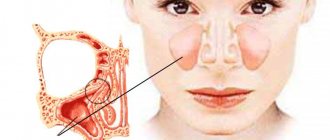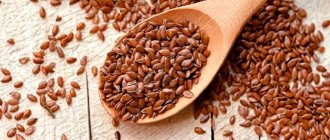Where does excess weight come from and what does it lead to?
Causes of obesity.
- A constant discrepancy between the amounts of energy expended and received, as a result of consuming high-calorie foods in large portions with a sedentary lifestyle.
- Genetic predisposition.
- Age and gender factors. Interestingly, women gain weight faster due to the hormonal characteristics of the body and less muscle mass relative to the physique of men. In addition, metabolism slows down with age, the need for energy decreases, which leads to the gradual accumulation of adipose tissue and weight gain.
- Primary pathology of the endocrine glands or dysfunction of the hypothalamic functions.
- Tumor development.
Complications of obesity:
- diseases of the digestive tract;
- pancreatitis;
- arterial hypertension;
- diseases of the gallbladder, liver;
- type 2 diabetes mellitus;
- cardiac ischemia;
- stroke;
- amenorrhea, infertility, menstrual irregularities in women, impotence in men;
- diseases of the respiratory, musculoskeletal systems (hypoventilation syndrome, gout, osteoarthritis);
- vascular diseases of the lower extremities.
In addition to deteriorating health, obesity disrupts psycho-emotional balance: it increases the level of anxiety, leads to frequent depression, decreased sexual function, causes difficulties in finding a job, and reduces self-esteem.
Excess weight in advanced stages causes endocrine dysfunction, which leads to death. In the world rankings, mortality from obesity ranks sixth, and from hunger – eighth.
Low fat diets
This is a diet in which fat accounts for 15-30% of all calories consumed []. So, on a 1,400 calorie diet, that's about 20-40 grams of fat per day. Although doctors have been recommending that obese patients reduce fat in their diets since the 1950s, official US dietary guidelines included this item only in the 1980s, when sufficient evidence had accumulated on the benefits of reducing fat.
Fat is the highest calorie-dense macronutrient (9 calories per gram of fat), so reducing it is an easy way to make meals less calorie-dense and eat less.
In a controlled study, researchers gave people food that was identical in appearance and taste, but different in the amount of fat. A higher fat diet resulted in weight gain and/or less weight loss [, ].
However, in the long term, “low-fat” diets do not lead to greater weight loss than conventional calorie restriction [, , ]. The detected difference is often less than a kilogram and has no practical significance.
Unexpected effects of losing weight
Losing 5-10% of body weight if you are overweight reduces the risk of exacerbation of diabetes, cardiovascular diseases, and improves overall health.
Let's look at 14 changes that occur in a person's life after getting rid of unnecessary pounds.
- A burst of energy. After losing weight, you will become more mobile, catching up with a departing bus or climbing stairs will become easier.
- Memory improvement. Brain activity will increase, the amount of information remembered will increase.
- Increased sex drive, you will feel sexier. In the course of research, American scientists came to the conclusion that the loss of 30 kilograms of one of the partners improves family relationships.
- Reducing the dangerous risk of developing cancer. Excess weight causes inflammatory reactions in the body, changes in the cells of the body. Losing weight by at least 5% reduces the risk of cancer.
- Restoring psycho-emotional balance.
- Changes in taste buds.
- Strengthening bones and joints by reducing the load on them.
- Reducing the cost of maintaining health by an average of 42%. This is due to the fact that obese people are more likely to have chronic diseases that require ongoing treatment.
- Career growth. According to statistics, slim people are 5 times easier to find a new job and increase their income than overweight people. This pattern especially applies to women.
- Reduced need for medications. Losing weight lowers blood cholesterol levels. As a result, the need for taking medications for high blood pressure will decrease. Maintaining a normal weight prevents the development of diseases of the heart, blood vessels, digestive tract, and thyroid gland. Interestingly, after losing weight, heartburn and asthma are less bothersome.
- Flabbiness of the skin. If, while losing weight, you limit yourself to just following a diet, ignoring sports, massage, the result of losing weight can be very disappointing. Sagging skin on problem areas (abdomen, thighs, buttocks, arms) is an unpleasant, painful sight for every woman. To eliminate it, you need to resort to tightening procedures or start regularly visiting the pool, massage therapist, or cosmetologist.
- Improved sleep. Losing extra pounds “frees” a person’s upper respiratory tract from the soft tissue that has been blocking it. As a result, sleep becomes better and 22 minutes longer.
- Increased chance of getting pregnant. Remember, obesity can cause polycystic ovary syndrome and infertility. These effective diets will help you lose unwanted weight, restore the functioning of your internal organs, and increase the likelihood of conceiving and bearing a healthy child.
- Improved vision. Don't forget that being overweight increases your risk of developing diabetes, which can adversely affect your eyes. According to research from the University of Georgia, obesity reduces the amount of lutein and zeaxanthin in the retina, which causes degenerative age-related changes.
Losing weight has a beneficial effect on the human body: hormonal levels are normalized, immunity increases, performance increases, erection problems disappear, and the load on the joints/vessels/heart decreases. As a result, life brings more joy.
Very low calorie diets
For several decades, this approach has been used in medical practice to treat obesity. The goal is to quickly lose the first kilograms (on average, from 1 to 2.5 per week) and maintain as much muscle as possible.
With extreme calorie restriction, muscle loss accounts for up to 25% of total weight loss []. But when you combine diet with strength training and enough protein in your diet, muscles can be preserved, studies have shown.
On this diet, the calorie content of food is no more than 800 kcal/day. At the same time, there is a lot of protein in food - 70-100 g/day or more. Fats can be up to 15 grams, and carbohydrates - 30-80 grams. If weight loss occurs in the clinic, then the diet is replaced with special cocktails and bars enriched with all the necessary vitamins and minerals.
For people with clinical obesity, this diet is a potentially powerful way to quickly lose a few pounds. This is beneficial when obesity threatens health, and also to motivate a person to continue losing weight when he sees quick results []. And in type 2 diabetes, it helps to improve glucose metabolism faster. But a very low-calorie diet works well in the short term, at the beginning of weight loss, and has no benefits for long-term weight loss (a year or more).
How long can you stay on this diet? In clinical practice, doctors use 8-12 weeks, which usually results in a loss of 1.5-2.5 kg per week. After this, you should move on to less strict calorie restriction.
It is not recommended to use such diets on your own. If the excess weight is small, they will not bring additional benefit. If you are obese, you should consult a doctor.
Example of dietary table No. 1
As an example of a therapeutic diet, consider dietary table No. 1. It is designed for patients with diseases of the gastrointestinal tract, its goal is a moderate chemical, mechanical and thermal effect on the gastrointestinal tract, a positive effect on inflammatory processes, healing of ulcers, etc.
General recommendations.
The diet involves limiting foods that strongly stimulate gastric secretion (secretion of gastric juice), irritating the mucous membrane, and also excludes difficult-to-digest foods. Consumption of very cold and hot foods is unacceptable; table salt is allowed in moderation. Meals are split, 5–6 times a day. Dishes should be boiled, steamed, baked. Hard foods need to be ground.
Authorized products.
Dried wheat bread made from premium flour, white crackers, dry biscuit, savory biscuits, fresh non-acidic cottage cheese, non-acidic kefir, yogurt, curd dishes: baked cheesecakes, lazy dumplings, puddings, soups with weak vegetable broth, pureed vegetable soups (except cabbage), lean meat (beef, rabbit, turkey and chicken), boiled tongue and liver, lean fish, some cereals: semolina, buckwheat, oatmeal, rice, vegetables only in cooked form: potatoes, beets, cauliflower, sweet varieties of fruit and berries, can be in the form of jelly, mousse and jellies, drinks: diluted tea (with milk or water), weak juices, rosehip decoction.
Prohibited products.
Products that cause gas formation and bloating (white cabbage, legumes), canned food, marinades, smoked meats, lard, fatty meat, garlic, turnips, radishes, horseradish, spices, sauces and seasonings, rich meat, fish and mushroom broths, fresh onions and green onions, parsley, dill, spinach, fresh baked goods and pastries, sour juices and fruits, alcohol, strong tea and coffee, sweet carbonated drinks.
Proper preparation and adherence to a healthy and therapeutic diet will not only bring comfort to the patient’s life, but will also contribute to a speedy recovery and restoration of the body.
Share:
(0 ratings; article rating 0)
Keto diets
The keto diet is a diet in which carbohydrates are reduced to 50 grams per day or less. In the absence of glucose, the body turns to alternative fuel - ketone bodies, which it produces from dietary fats and body fats if a person is in a calorie deficit.
It is believed that by giving up carbohydrates, you can speed up fat oxidation and fat burning, because insulin does not interfere with the process. That is, the benefits of cutting out carbohydrates go beyond just reducing calories.
It is also believed that the production and use of ketone bodies creates a unique metabolic state in the body, which should create better conditions for fat loss. In support of this idea, a recent meta-analysis found that a ketogenic diet suppresses appetite better than a regular low-calorie diet.
But despite the large number of studies of carbohydrates and their effect on weight loss, only a few controlled the total amount of protein and calories for the purity of the experiment. And those that were controlled showed no benefit of the keto diet over conventional calorie restriction [, , , ].
Dish recipes
Recipes for dishes that fit well into weight loss diets at home.
Detox soup
Ingredients:
- A bunch of arugula;
- 3 heads of broccoli;
- Quarter zucchini;
- Onion;
- A piece of ginger root;
- Garlic clove;
- Olive oil;
- Lemon juice;
- Mineral water, still, 2 glasses;
- Ground black pepper;
- Sea salt.
Preparation:
- Fry onions and garlic in a frying pan.
- After a couple of minutes, add ginger, broccoli and zucchini.
- Then, after 3 minutes, add water, cover the whole thing with a lid and simmer over low heat for no more than 7 minutes.
- Lay out the resulting mixture, add salt, pepper, arugula, and lemon juice.
- Beat the mixture for about three minutes at medium speed.
Fish with vegetables
Ingredients:
- 2 pieces of chilled cod;
- half a red onion;
- 1 piece of bell red pepper;
- 2 tomatoes;
- lemon slice;
- greens (dill, parsley, celery).
Preparation:
- Cut the cod into portions.
- Prepare the vegetables: cut the pepper into strips, onion into half rings, chop the greens. Place on parchment.
- Place fish on vegetables. Add tomatoes and lemon on top.
- Cover with a sheet of paper and place in the oven (180 degrees) for 20 minutes.
Salad for weight loss
Ingredients:
- Fresh cucumber;
- Fresh tomato;
- Red bell pepper;
- A bunch of green onions and arugula;
- Lemon juice;
- Olive oil.
Preparation:
- Rinse the greens and leave in water for 5 minutes to remove dust.
- Chop the cucumber, tomato and pepper and pour into a container.
- Chop the arugula and greens and add to the vegetables.
- Sprinkle the salad with lemon juice and add a spoonful of olive oil. Mix.
Low carb diets
There is still no agreement among scientists about exactly what amount of carbohydrates makes a low-carb diet. The Institute of Medicine's Food and Nutrition Board has set the "normal" carbohydrate intake range for adults at 45-65% of total calories. Therefore, anything below can be considered low-carb.
In the scientific literature, a low-calorie diet is considered to be a diet in which carbohydrates account for less than 40% of energy [, ]. If we talk about the amount of carbohydrates in grams, then this is everything that is less than 200 grams per day []. Some experts give figures of 50-150 grams of carbohydrates per day.
In any case, meta-analyses (analyses of accumulated studies on a topic) have compared the weight loss effects of low-fat and low-carb diets and found no difference. The results were similar, and no metabolic benefits of a low-carbohydrate diet were found in healthy people [,]. A low-carb diet only works as long as it allows you to limit calories.
There are several explanations for why it is considered particularly effective.
The first is simplicity. The simpler the nutritional rules, the better and longer a person follows a diet and loses weight, as a result [, , , ]. Therefore, “eating fewer carbohydrates” is one of the simple and clear ways to reduce caloric intake. A person removes muffins, donuts, chips, white bread and pastries from food - everything that brings a lot of calories (many of these products also contain a lot of fat), but does not satiate well, forcing you to eat more during the day.
The second is the loss of glycogen and water on a low-carb diet, which reduces up to 3 kg on the scale, although not at the expense of fat.
The third point, which does not apply to carbohydrates themselves, but is always associated with low-carbohydrate diets, is an increase in protein in food.
High Protein Diets
A high-protein diet is considered to be one where the share of protein is 30-60% of the total calories []. If measured in grams, it is 1.2-1.6 g/kg body weight []. At the same time, twice the official norm for a sedentary person (1.6 g/kg versus 0.8 g/kg) turned out to be more effective for preserving muscle and reducing the amount of fat [, ].
Recently, it was discovered that when combining diet and high-intensity training (interval sprints and strength training), an even higher protein content (2.4 g/kg) was even more effective for muscle growth and fat burning.
Several recent meta-analyses [, , , , ] support the benefits of high protein meals for weight loss and muscle maintenance in dieting.
Another systematic review found that 2.3-3.1 grams of protein per kg of lean body mass may be recommended for lean people who are dieting and doing strength training.
Protein plays a big role in weight loss nutrition. Of all the macroelements, it is the most energetically expensive: the body spends 20-30% of incoming calories on its digestion and absorption (for carbohydrates this is 5-10%, for fats - only 0-3%). Additionally, protein is the most filling of all macronutrients and is better for controlling appetite and managing hunger. So low-carb and low-fat diets are effective because they usually contain more protein.











